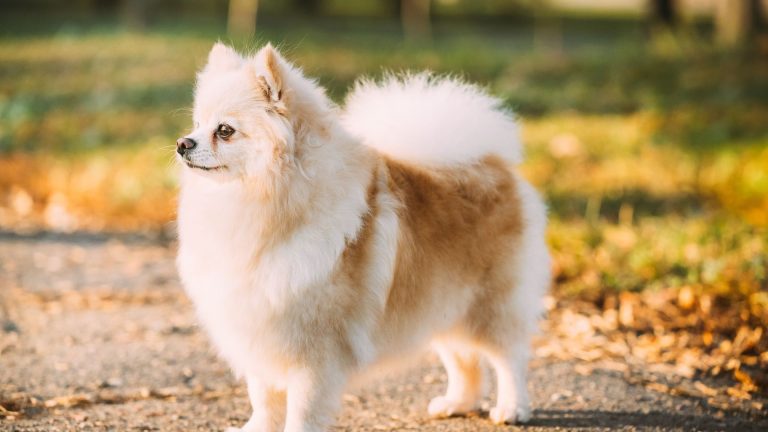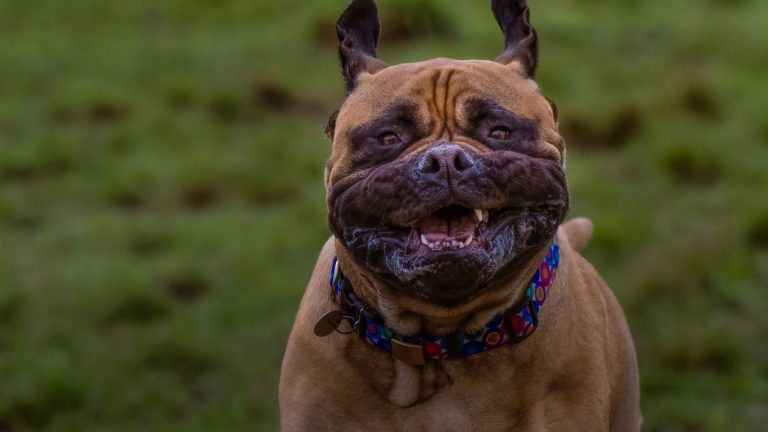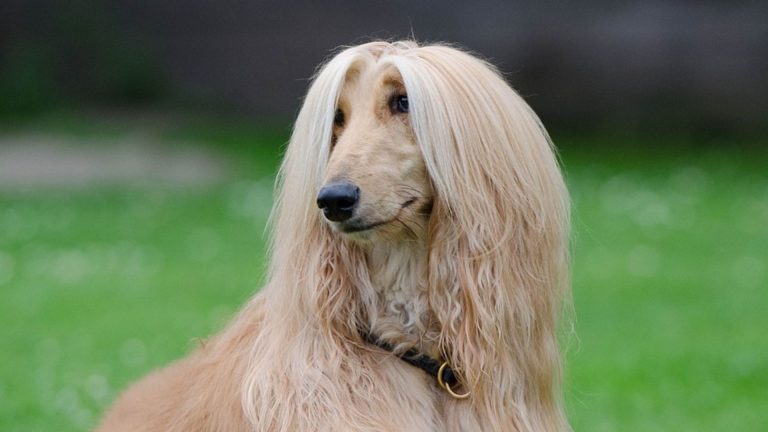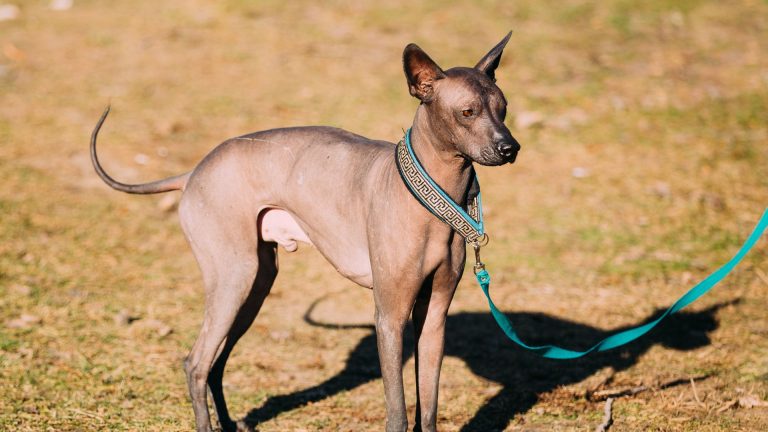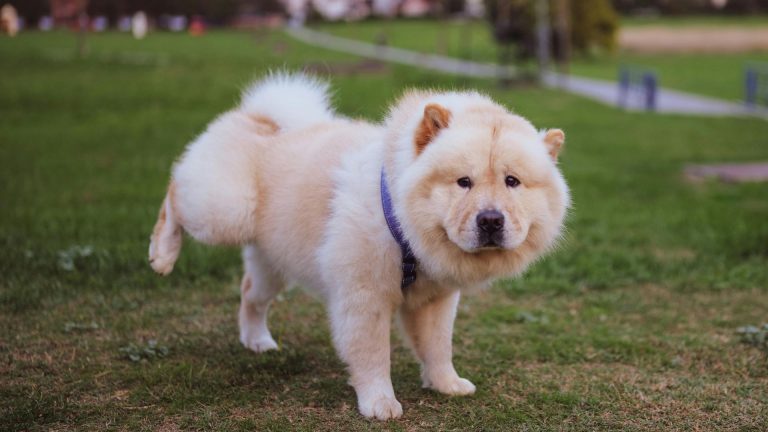
Contents
Red Golden Retrievers are a striking and beloved variant of the traditional Golden Retriever. Known for their rich, mahogany-colored coats, they possess the same friendly and loyal nature as their lighter-colored counterparts. These dogs are not only visually stunning but also make excellent companions for families, singles, and seniors alike.
The purpose of this article is to provide a comprehensive guide on Red Golden Retrievers. We will explore their key traits, including physical characteristics and temperament. Additionally, we will cover essential care tips, such as diet, exercise, grooming, and training. Understanding these aspects will help you ensure your Red Golden Retriever remains healthy, happy, and well-adjusted. Whether you are considering adopting one or already have a Red Golden Retriever, this guide will equip you with the knowledge needed to provide the best care for your furry friend.
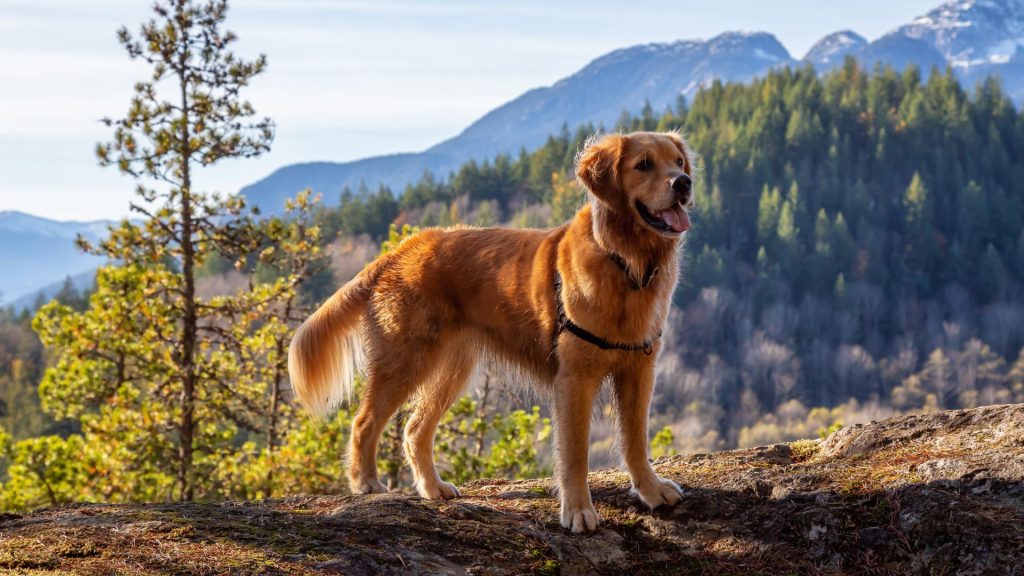
History and Background
The Golden Retriever originated in Scotland in the mid-19th century. Bred by crossing the now-extinct Yellow Retriever with the Tweed Water Spaniel, breeders aimed to create a dog proficient in retrieving game from both water and land. Lord Tweedmouth is credited with developing this breed, selecting dogs with excellent retrieving abilities and a friendly temperament. The breed’s popularity quickly spread due to their intelligence, gentle nature, and versatility in various roles, including hunting, tracking, and companionship.
Development of the Red Golden Retriever Variant
The Red Golden Retriever is a natural variant within the breed, characterized by its rich, dark mahogany coat. This striking color is a result of selective breeding. Some Golden Retrievers naturally possess darker fur due to their genetic makeup. Breeders focused on these darker individuals to enhance the red coloration while maintaining the breed’s other desirable traits. The result is a stunning dog with the same loyal, friendly nature as the traditional Golden Retriever, but with a distinctive, eye-catching coat.
Popularity and Recognition
Red Golden Retrievers have gained popularity among dog enthusiasts for their unique appearance and charming personalities. While not officially recognized as a separate breed, the red variant is acknowledged within the Golden Retriever community. Many owners and breeders appreciate the beauty and uniqueness of the red coat, making these dogs highly sought after. Despite their color difference, Red Golden Retrievers adhere to the same breed standards and exhibit the same beloved characteristics that make Golden Retrievers one of the most popular dog breeds worldwide.
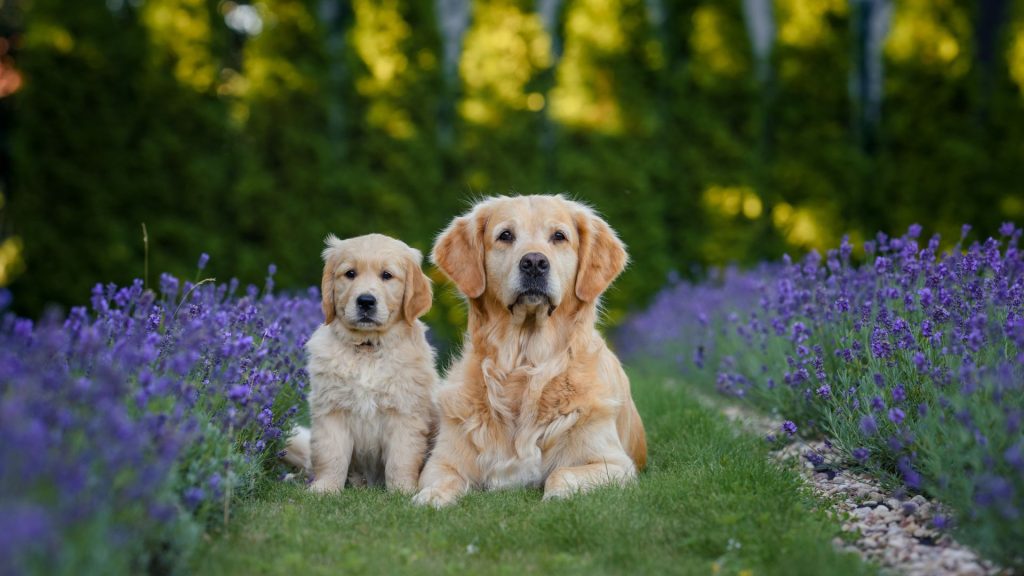
Physical Traits
Red Golden Retrievers are distinguished by their deep, mahogany-colored coats. This rich, dark hue makes them stand out from the traditional golden or cream-colored variants. The coat is dense and water-repellent, a characteristic trait of the breed. It can be wavy or straight, offering protection against various weather conditions. Regular grooming is essential to keep the coat healthy and shiny, preventing matting and tangling.
Size and Weight
Red Golden Retrievers are medium to large-sized dogs. Males typically stand between 23 to 24 inches tall at the shoulder, while females are slightly smaller, measuring 21.5 to 22.5 inches. In terms of weight, males generally range from 65 to 75 pounds, and females from 55 to 65 pounds. Their robust and athletic build reflects their heritage as working dogs, capable of performing various tasks with agility and strength.
Distinctive Features
Apart from their striking coat color, Red Golden Retrievers share several distinctive features with their golden counterparts. They have a broad head with a well-defined stop and a strong, muscular neck. Their eyes are dark brown and expressive, exuding an intelligent and friendly demeanor. The ears are medium-sized, hanging close to the cheeks, and their tails are thick and feathery, carried with a slight upward curve.
Red Golden Retrievers also possess a well-proportioned, athletic body, with a deep chest and strong, straight legs. Their paws are round and compact, ideal for traversing various terrains. Overall, their distinctive features, combined with their beautiful red coats, make Red Golden Retrievers a unique and captivating variant of the beloved Golden Retriever breed.

Personality and Temperament
Red Golden Retrievers are known for their friendly and affectionate nature. They are highly intelligent and eager to please, making them easy to train. Their outgoing and sociable personality makes them great companions for families and individuals alike. Red Golden Retrievers are also known for their loyalty and gentle demeanor, which makes them excellent therapy and service dogs.
Interaction with Family and Children
Red Golden Retrievers thrive in family settings. They are patient and gentle with children, often forming strong bonds with them. Their playful nature makes them great playmates for kids, while their protective instincts ensure they are always looking out for their family’s well-being. These dogs are very adaptable and can adjust to various family dynamics, providing love and companionship to every member of the household.
Behavior with Other Pets
Red Golden Retrievers generally get along well with other pets. Their friendly and non-aggressive nature makes them excellent companions for other dogs and even cats. Proper socialization from a young age helps ensure they are comfortable and well-behaved around other animals. They enjoy playing and interacting with other pets, which can help keep them mentally and physically stimulated. However, like all dogs, they should be supervised during initial introductions to new pets to ensure a smooth transition and prevent any potential conflicts.
In summary, Red Golden Retrievers are known for their friendly, loyal, and gentle temperament. They interact wonderfully with family members, children, and other pets, making them an ideal choice for households seeking a loving and sociable canine companion. Their adaptable and easygoing nature ensures they fit well into various living situations, providing joy and companionship to everyone around them.
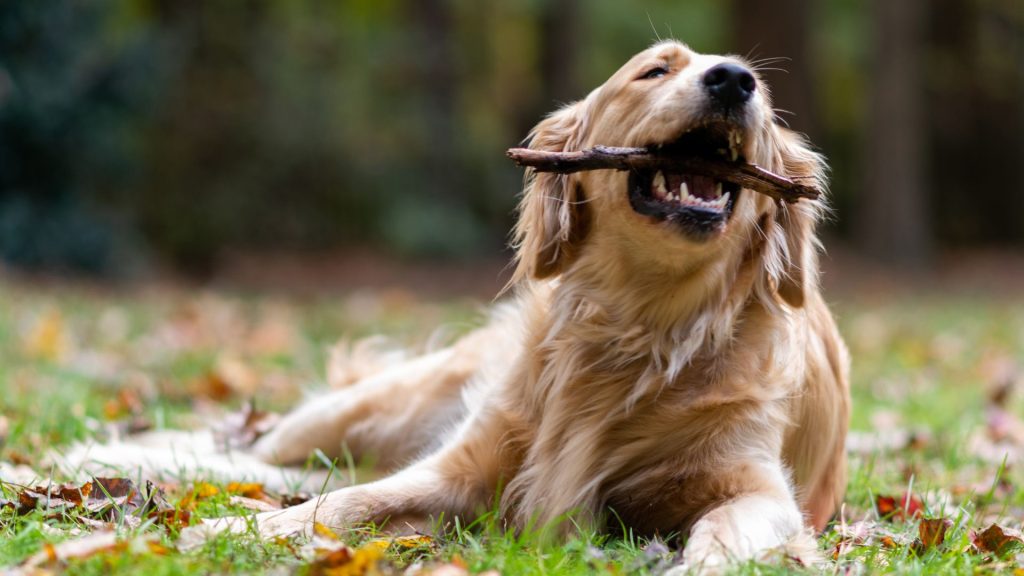
Health and Lifespan
Red Golden Retrievers, like their golden counterparts, are generally healthy but can be prone to certain genetic health issues. Common health problems include hip dysplasia, elbow dysplasia, and various heart conditions such as subvalvular aortic stenosis (SAS). They may also be susceptible to eye conditions like cataracts and progressive retinal atrophy (PRA). Skin allergies and ear infections are other issues that can affect Red Golden Retrievers, especially due to their dense coats and floppy ears.
Lifespan Expectations
The average lifespan of a Red Golden Retriever is between 10 to 12 years. With proper care, some dogs may live longer, enjoying many years of companionship and activity. Their lifespan can be influenced by factors such as genetics, diet, exercise, and overall healthcare.
Preventive Healthcare Tips
To ensure a long, healthy life for your Red Golden Retriever, regular veterinary check-ups are crucial. These visits help in early detection and management of potential health issues. Here are some key preventive healthcare tips:
- Balanced Diet: Provide a nutritious and balanced diet tailored to their age, size, and activity level. High-quality dog food with the right balance of protein, fats, and carbohydrates is essential.
- Regular Exercise: Keep your Red Golden Retriever active with daily exercise. Regular walks, playtime, and mental stimulation help maintain a healthy weight and prevent obesity-related health problems.
- Grooming and Hygiene: Regular grooming helps prevent skin issues and ear infections. Brush their coat frequently to remove loose hair and prevent matting. Clean their ears regularly to avoid infections.
- Dental Care: Brush their teeth regularly and provide dental chews to maintain oral hygiene and prevent periodontal disease.
- Vaccinations and Preventatives: Keep up with vaccinations and provide flea, tick, and heartworm preventatives as recommended by your veterinarian.
With proper care and regular veterinary attention, Red Golden Retrievers can enjoy a healthy and active life, bringing joy and companionship to their families.
Diet and Nutrition
Red Golden Retrievers require a balanced diet to support their active lifestyle and overall health. Their nutritional needs include high-quality proteins for muscle development, healthy fats for energy and coat health, and carbohydrates for sustained energy levels. Additionally, essential vitamins and minerals are crucial for their immune system, bone health, and overall well-being. Omega-3 and Omega-6 fatty acids contribute to a shiny coat and healthy skin.
Recommended Diet for Red Golden Retrievers
A recommended diet for Red Golden Retrievers should consist of high-quality commercial dog food or a well-balanced homemade diet. For commercial dog food, look for brands that list real meat as the first ingredient and avoid fillers such as corn, wheat, and soy. Choose formulas that cater to their life stage—puppy, adult, or senior—to ensure they receive the appropriate nutrients.
For those opting for homemade diets, consult with a veterinarian or a canine nutritionist to ensure the meals meet all of their nutritional requirements. Ingredients such as lean meats (chicken, turkey, beef), vegetables (carrots, spinach, sweet potatoes), and whole grains (brown rice, quinoa) can be included. Supplements may be necessary to provide essential vitamins and minerals not adequately supplied by the food.

Tips for Maintaining a Healthy Weight
Maintaining a healthy weight is crucial for preventing obesity-related health issues such as joint problems, heart disease, and diabetes. Here are some tips to help keep your Red Golden Retriever at a healthy weight:
- Portion Control: Measure their food portions according to the guidelines on the dog food packaging or as advised by your veterinarian. Avoid overfeeding and limit treats.
- Regular Exercise: Ensure they get plenty of physical activity through daily walks, playtime, and engaging activities like fetch or agility training.
- Healthy Treats: Choose low-calorie, nutrient-dense treats and use them sparingly. Treats should not make up more than 10% of their daily caloric intake.
- Monitor Weight: Regularly check their weight and body condition. If you notice weight gain, adjust their diet and exercise regimen accordingly.
Providing a balanced diet, controlling portions, ensuring regular exercise, and choosing healthy treats are key to maintaining a healthy weight and supporting the overall health of your Red Golden Retriever.
Exercise Requirements
Red Golden Retrievers are energetic and active dogs that require regular exercise to stay healthy and happy. They need at least 60 minutes of exercise daily to burn off their energy and maintain their physical fitness. This can be divided into two or more sessions throughout the day to keep them engaged and prevent boredom.
Suitable Activities and Exercises
Various activities and exercises can help meet the exercise needs of a Red Golden Retriever. Daily walks are essential for their physical health and provide opportunities for socialization and exploration. Aim for brisk walks or jogs that last between 30 to 45 minutes each session. Additionally, playing fetch is a favorite activity for Golden Retrievers, as it taps into their natural retrieving instincts and provides a good workout.
Swimming is another excellent exercise option, especially given their water-repellent coats and love for water. If you have access to a safe swimming area, let your Red Golden Retriever swim regularly. Agility training and obstacle courses can also be highly beneficial, offering both physical and mental challenges that keep them stimulated.
Importance of Mental Stimulation
Mental stimulation is as important as physical exercise for Red Golden Retrievers. These intelligent dogs thrive on mental challenges and need activities that engage their minds. Interactive toys, puzzle feeders, and training sessions that teach new commands or tricks are great ways to provide mental stimulation. Additionally, involving them in activities like scent work or hide-and-seek games can keep their minds sharp and prevent boredom-related behaviors.
In summary, Red Golden Retrievers require a combination of daily physical exercise and mental stimulation to maintain their health and happiness. Incorporating a variety of activities and exercises ensures they remain engaged, fit, and well-adjusted, making them delightful companions.
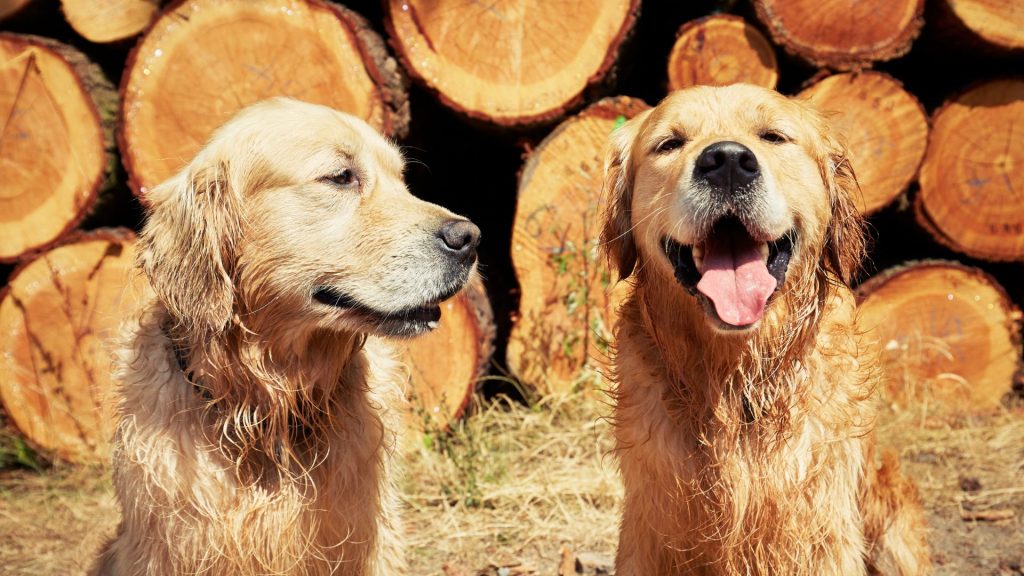
Grooming and Maintenance
Red Golden Retrievers have a dense, double-layered coat that requires regular grooming to stay healthy and look its best. Brush their coat at least three to four times a week to remove loose hair, prevent matting, and distribute natural oils. Use a slicker brush or an undercoat rake to reach the dense undercoat effectively. Regular brushing not only keeps the coat clean but also reduces shedding around the house.
Bathing and Hygiene Practices
Bathing your Red Golden Retriever every six to eight weeks, or as needed, helps maintain a clean and healthy coat. Use a gentle dog shampoo that won’t strip their coat of natural oils. Thoroughly rinse to avoid any residue that might irritate their skin. After bathing, dry their coat completely to prevent moisture from causing skin issues.
In addition to regular baths, maintain good hygiene by cleaning their ears weekly to prevent infections. Use a vet-approved ear cleaner and cotton balls to gently clean the outer ear. Brush their teeth several times a week to prevent dental problems and provide dental chews to help keep their teeth clean. Trim their nails regularly to avoid overgrowth, which can cause discomfort and affect their gait.
Seasonal Shedding and How to Manage It
Red Golden Retrievers experience seasonal shedding, typically in the spring and fall. During these times, they shed their undercoat to adapt to changing temperatures. Increase brushing frequency to daily during shedding seasons to manage the excess hair. Use a deshedding tool or an undercoat rake to effectively remove the loose fur from the undercoat. Regular grooming during these periods helps keep their coat in good condition and reduces the amount of hair around your home.
In summary, regular grooming and proper hygiene practices are essential for maintaining the health and appearance of your Red Golden Retriever. By staying on top of coat care, bathing, and managing seasonal shedding, you can ensure your dog looks and feels its best year-round.
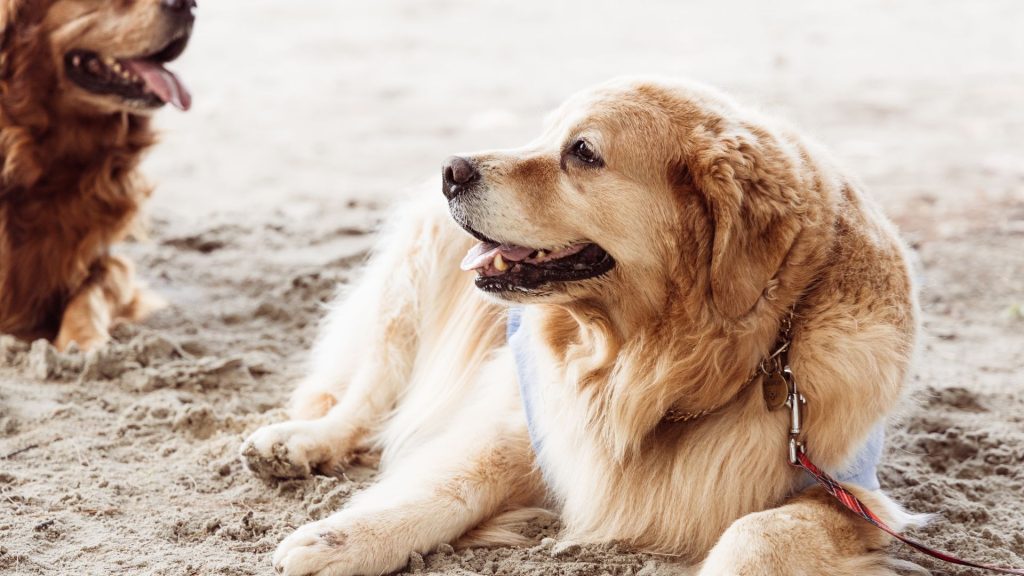
Training and Socialization
Training your Red Golden Retriever starts with basic obedience commands such as sit, stay, come, and down. Begin training at a young age using positive reinforcement techniques. Reward your dog with treats, praise, or play whenever they follow a command correctly. Keep training sessions short and consistent, around 10-15 minutes each, to maintain your dog’s interest and focus. Consistency and patience are key, as Golden Retrievers are eager to please and respond well to positive reinforcement.
Importance of Early Socialization
Early socialization is crucial for Red Golden Retrievers to develop into well-adjusted and confident adults. Expose your puppy to a variety of people, environments, and other animals during their formative weeks. Arrange playdates with other dogs and introduce them to different sounds, sights, and experiences. This exposure helps prevent fear and anxiety, promoting a friendly and adaptable temperament. Puppy socialization classes can be particularly beneficial, providing structured opportunities for interaction and learning.
Advanced Training Possibilities
Once your Red Golden Retriever has mastered basic obedience, you can explore advanced training possibilities. Agility training is an excellent option, combining physical exercise with mental challenges. Teach your dog to navigate obstacle courses, jump through hoops, and weave through poles. Advanced obedience training, such as off-leash commands and complex tricks, can further enhance your dog’s skills. Red Golden Retrievers also excel in activities like therapy work and search and rescue due to their intelligence and gentle nature. Training for these roles involves specialized instruction and certification but can be highly rewarding for both you and your dog.
In summary, proper training and early socialization are essential for a well-behaved and confident Red Golden Retriever. Starting with basic obedience, exposing your puppy to various experiences, and exploring advanced training opportunities will ensure your dog remains engaged, well-mannered, and happy throughout their life.
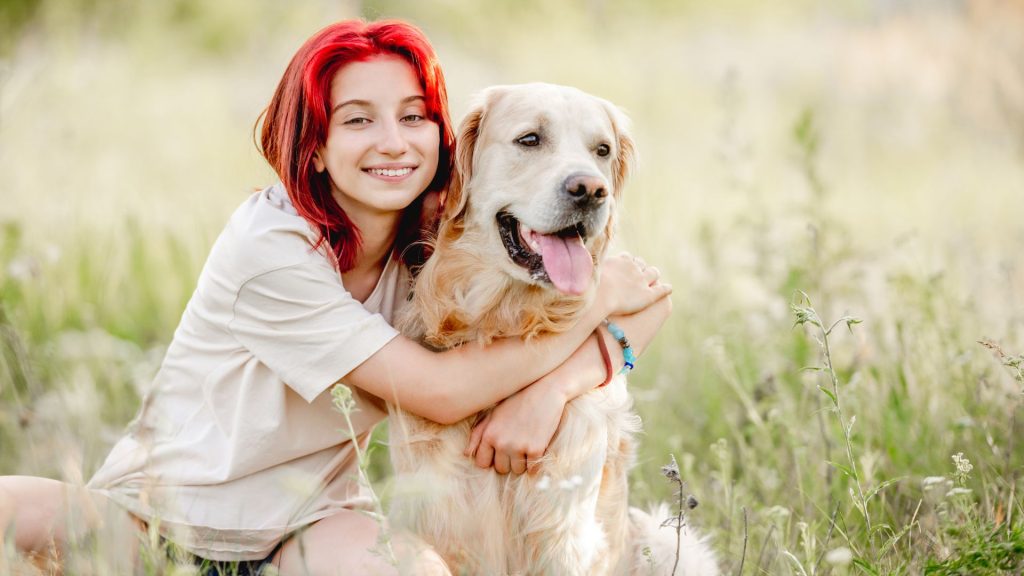
Living Conditions and Environment
Red Golden Retrievers are adaptable and can thrive in various living environments, provided they receive adequate exercise and mental stimulation. They do well in both apartments and houses with yards. However, they need sufficient space to move around and play. In apartments, ensure regular outdoor exercise to meet their physical needs. Homes with fenced yards are ideal as they provide a safe space for them to run and play freely.
Indoor vs. Outdoor Considerations
While Red Golden Retrievers enjoy outdoor activities, they are primarily indoor dogs. They thrive on human companionship and should spend most of their time inside with their families. Outdoor time should be supervised and in a secure area to prevent accidents or escapes. Prolonged exposure to extreme weather conditions should be avoided. In hot weather, ensure they have access to shade and water. In cold weather, limit their time outside and provide a warm space indoors.
Safety Tips for Red Golden Retrievers
- Secure Fencing: Ensure your yard has a secure fence to prevent your Red Golden Retriever from wandering off. Regularly check for any gaps or weak spots in the fence.
- Supervised Outdoor Time: Always supervise your dog when they are outside, especially if your yard is not fully fenced. This prevents them from encountering potential dangers like traffic or other animals.
- Safe Environment: Keep harmful substances such as chemicals, pesticides, and certain plants out of reach. Ensure there are no sharp objects or small items that your dog could swallow.
- Identification: Make sure your Red Golden Retriever wears a collar with an ID tag that includes your contact information. Microchipping is also recommended for added security.
- Temperature Control: Protect your dog from extreme temperatures. Provide shade and water in hot weather and limit exposure to cold weather. Avoid leaving them in a parked car, as temperatures can quickly become dangerous.
Red Golden Retrievers can adapt to various living spaces as long as their exercise and companionship needs are met. Ensuring a safe and secure environment, both indoors and outdoors, is essential for their well-being. By following these safety tips, you can provide a comfortable and protected living space for your Red Golden Retriever.
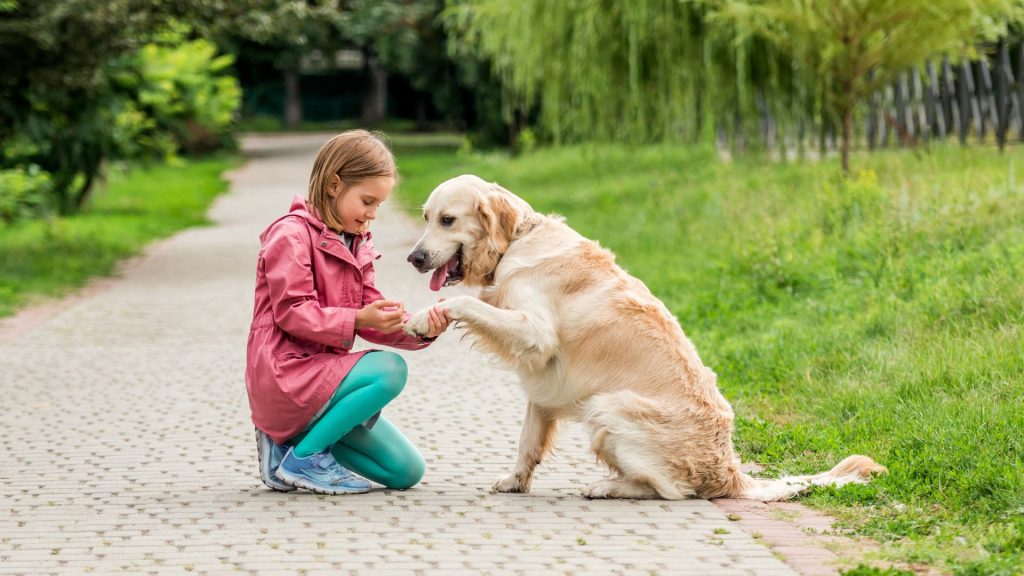
Conclusion
Red Golden Retrievers are beloved for their rich mahogany coats, friendly temperament, and high intelligence. They thrive with regular exercise, mental stimulation, and proper grooming. These adaptable dogs can live in various environments, provided their need for companionship and activity is met.
Consistent training and early socialization ensure they develop into well-mannered and confident pets. Regular veterinary care and a balanced diet are essential for their health. Owning a Red Golden Retriever is rewarding, as they bring joy, loyalty, and affection to their families, making them exceptional companions. Proper care ensures they lead a happy and healthy life.

Hello, I’m Donna Carter, the founder and writer behind PetFleck.com. My journey with dogs started years ago, and it’s been a passion that has only grown stronger over time. I’ve always been fascinated by the unique behaviors and characteristics of different dog breeds, and this curiosity has led me to dive deep into the world of canine studies.
My love for dogs is the driving force behind everything I do. I’ve dedicated countless hours to researching and understanding the nuances of dog care, training, and breed-specific traits. This dedication helps me create content that is not only informative but also genuinely helpful for fellow dog lovers and owners.
At PetFleck, I combine my extensive knowledge and hands-on experience with my passion for dogs to provide valuable insights and tips. Whether it’s exploring different breeds or offering practical advice on dog care, I aim to share knowledge that makes a real difference in the lives of dogs and their families.
I’m thrilled to share my love for dogs with you through my writing. I hope my articles inspire and inform, helping you to better understand and appreciate the incredible bond we share with our furry friends.
Thank you for visiting PetFleck.com, and I look forward to connecting with you through our shared love of dogs!

